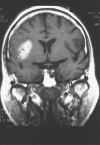Acute cardioembolic cerebral infarction: answers to clinical questions
- PMID: 22845816
- PMCID: PMC3394108
- DOI: 10.2174/157340312801215791
Acute cardioembolic cerebral infarction: answers to clinical questions
Abstract
Cardioembolic cerebral infarction (CI) is the most severe subtype of ischaemic stroke but some clinical aspects of this condition are still unclear. This article provides the reader with an overview and up-date of relevant aspects related to clinical features, specific cardiac disorders and prognosis of CI. CI accounts for 14-30% of ischemic strokes; patients with CI are prone to early and long-term stroke recurrence, although recurrences may be preventable by appropriate treatment during the acute phase and strict control at follow-up. Certain clinical features are suggestive of CI, including sudden onset to maximal deficit, decreased level of consciousness at onset, Wernicke's aphasia or global aphasia without hemiparesis, a Valsalva manoeuvre at the time of stroke onset, and co-occurrence of cerebral and systemic emboli. Lacunar clinical presentations, a lacunar infarct and especially multiple lacunar infarcts, make cardioembolic origin unlikely. The most common disorders associated with a high risk of cardioembolism include atrial fibrillation, recent myocardial infarction, mechanical prosthetic valve, dilated myocardiopathy and mitral rheumatic stenosis. Patent foramen ovale and complex atheromatosis of the aortic arch are potentially emerging sources of cardioembolic infarction. Mitral annular calcification can be a marker of complex aortic atheroma in stroke patients of unkown etiology. Transthoracic and transesophageal echocardiogram can disclose structural heart diseases. Paroxysmal atrial dysrhythmia can be detected by Holter monitoring. Magnetic resonance imaging, transcranial Doppler, and electrophysiological studies are useful to document the source of cardioembolism. In-hospital mortality in cardioembolic stroke (27.3%, in our series) is the highest as compared with other subtypes of cerebral infarction. Secondary prevention with anticoagulants should be started immediately if possible in patients at high risk for recurrent cardioembolic stroke in which contraindications, such as falls, poor compliance, uncontrolled epilepsy or gastrointestinal bleeding are absent. Dabigatran has been shown to be non-inferior to warfarin in the prevention of stroke or systemic embolism. All significant structural defects, such as atrial septal defects, vegetations on valve or severe aortic disease should be treated. Aspirin is recommended in stroke patients with a patent foramen ovale and indications of closure should be individualized. CI is an important topic in the frontier between cardiology and vascular neurology, occurs frequently in daily practice, has a high impact for patients, and health care systems and merits an update review of current clinical issues, advances and controversies.
Figures







References
-
- Weir NU. An update on cardioembolic stroke. Postgrad Med J. 2008;84:133–42. - PubMed
-
- Ferro JM. Brain embolism. Answers to practical questions. J Neurol. 2003;250:139–47. - PubMed
-
- Murtagh B, Smalling RW. Cardioembolic stroke. Curr Atherosclr Rep. 2006;8:310–6. - PubMed
-
- Ferro JM. Cardioembolic stroke: an update. Lancet Neurol. 2003;2:177–88. - PubMed
Publication types
MeSH terms
Substances
LinkOut - more resources
Full Text Sources
Medical

